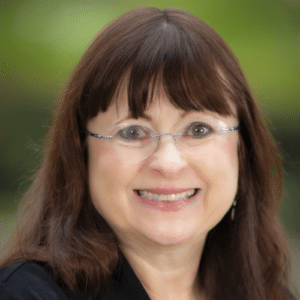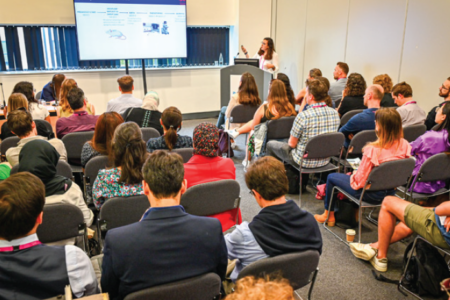
Professor Kim E. Barrett
Editor-in-Chief of The Journal of Physiology
I am writing this on the way home from a scientific meeting held at University of California, Los Angeles. Meetings are a seemingly mundane but essential part of the scientific enterprise whose value we became acutely aware of when such gatherings became impossible for many long months during the pandemic.
The meeting was one in a series convened to discuss key aspects of women’s health related to neurodegenerative diseases, breast cancer and cardiovascular health. As I enjoyed the keynote presentation, a panel discussion on hormone replacement therapy past, present and future, and short talks and posters that were mostly presented by early career researchers, I was reminded once again that science is a human enterprise. One that is greatly enhanced by our ability to meet in person, bounce ideas off colleagues old and new, gain inspiration in data and concepts from fields remote from our own but yet which spark an “aha” moment. As well as giving us the opportunity to socialise across meals and receptions.
Like meetings, scientific journals are critical components that allow a field to shape its contours and trajectory. While journals do not, in their day-to-day operations, typically require in person interactions (and indeed some aspects are carried out by parties whose identities are concealed), they nevertheless benefit from a human touch. At their best, journals can represent the nidus of a particular scientific community that stretches worldwide, where editors, reviewers, authors and readers collaborate to move the field forward and at The Journal of Physiology, we currently have three upcoming closing dates for Special Issues that we hope will do exactly that. Please consider submitting your work.
- Physiology of ageing skeletal muscle and the protective effects of exercise (closing date 31 May 2024)
- Regulation of cardiovascular and skeletal muscle function in exercise (closing date 31 May 2024)
- Current advances in large-pore channels: from structure-function to physiology and disease (closing date 1 June 2024)
Not only do journals help to shape scientific fields, but they also have the ability to help shape careers. An important role for this community is to induct new members and to socialise them in the way the field “does business”. At The Journal of Physiology, we have long considered it our responsibility to highlight the efforts of students and postdoctoral fellows, including by publishing a short bio and picture of the first author(s) to accompany all accepted manuscripts. And in July, we will welcome a new cohort of our Editorial Board Fellows – individuals who have gained some early experiences of publishing and reviewing, but without direct exposure to editorial decision making. This scheme, now in its seventh year, is intended to lift the veil on the sometimes-mysterious process by which referee reports result in decisions to publish or reject a piece of work. Hopefully, with information that is useful to strengthen the scientific value of a manuscript no matter what its disposition. Under the guidance of a Senior Editor, the Fellows learn how to balance conflicting opinions, judge the likely impact of a paper, and render recommendations that, while characterised by rigour, are also both humane and helpful.
While most of the business of a journal can be conducted via an online submission site, email and Zoom meetings, there is no substitute for the energy that can be gained from an in-person meeting of its editorial board to reinject vigour, creativity and new ideas. In this regard, we are grateful that the JP Board is able to gather in July during Physiology in Focus 2024 at Northumbria University to brainstorm, refine and implement new ideas for The Journal, with a particular emphasis on the input of our members who are earlier in their careers (and especially including our Editorial Board Fellows). This most human of enterprises, held in conjunction with the upcoming Physiology in Focus meeting, will ensure that JP retains its relevance to the physiological community. Don’t hesitate to contact me or any member of the editorial team if you want to add your voice to our process of idea generation.

